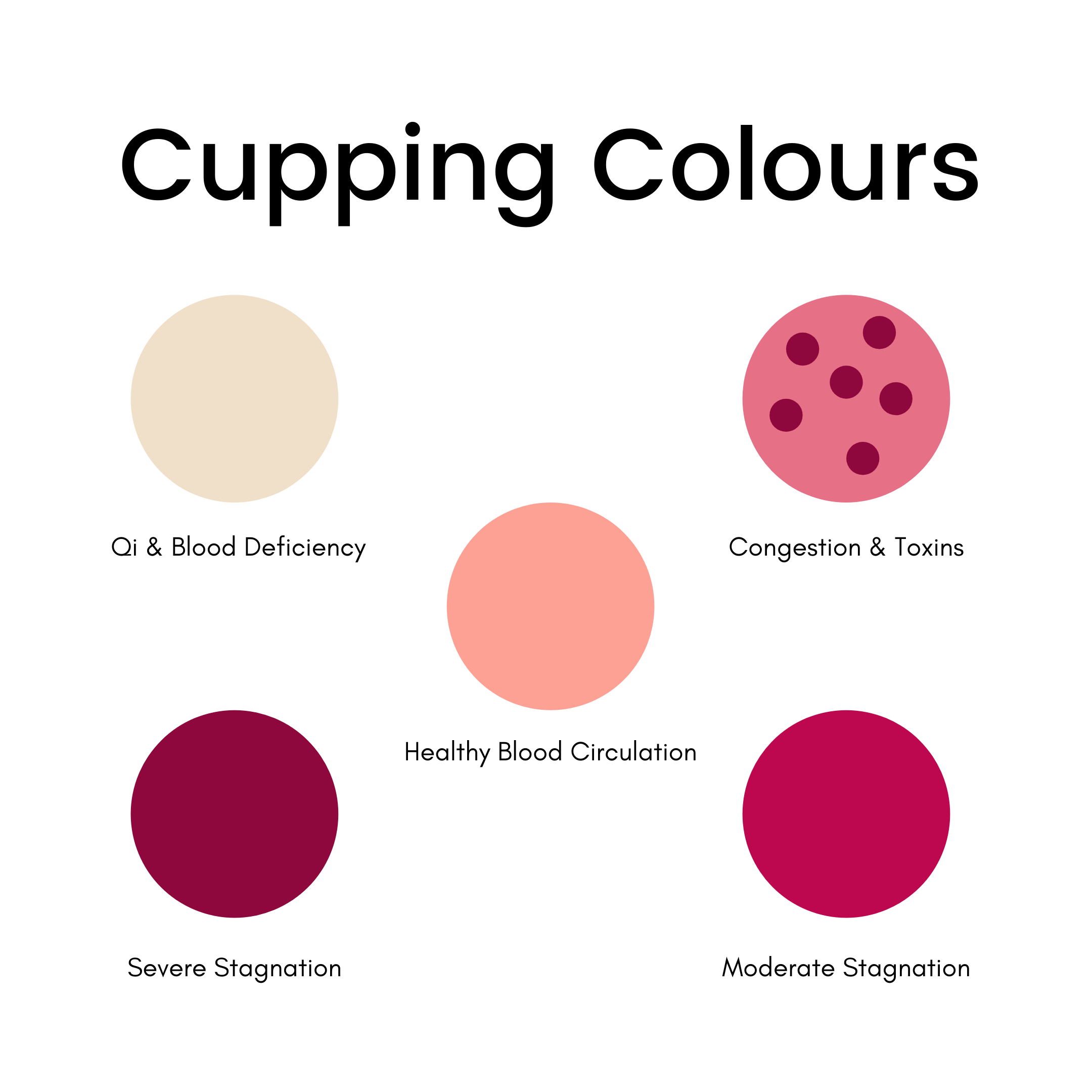What is Cupping?
Cupping
Cupping is a traditional form of bodywork that uses small glass or silicone cups as suction devices that are placed on the skin to disperse and break up stagnation by drawing congested blood, Qi or other humors to the surface. Cupping is much like the inverse of massage; instead of applying pressure to muscles, the cups create a gentle vacuum to pull them upward. Once the desired suction has been achieved, the cups can be gently moved across the skin or held in place.
The Benefits of Cupping
Cupping can be an effective technique to treat pain and inflammation as it disperses congested lymph, circulates fluids, releases heat and returns mobility back to the body.
On the back, cupping not only helps to relieve pain and sore muscles, but it can give me a deeper insight into the health of a person’s organs. The Back Shu points are very special, as each point correlates to a different organ in the Chinese Medicine cannon. If I have a theory about whether an organ is functioning improperly, due to the signs and symptoms gathered during the intake, I’ll place glass cups on the Back Shu of said organ and see if any congested blood comes to the surface.
The colour and density of the marks left by the cup will be clinically significant to me and will help shape my treatment protocol.
Clinically, I use cupping to help relax someone who's nervous system is running on high ticking into the fight or flight mode. Performing a light form of cupping for relaxation can help restore a patient’s vitality and spirit after illness or emotional distress
What to Expect During Your Cupping Treatment
What Do the Marks Mean? The Mystery of Cupping Explained
Cupping is one of my favourite modalities to introduce patients too. Depending upon their presenting concern will dictate whether or not cupping is appropriate. I typically will perform cupping on a patient's back after the needles have been removed and will end the treatment on this relaxing note.
Cupping can enhance the effectiveness of my treatments by:
Improving circulation by moving Qi & blood
Clearing excess heat from the body
Encouraging relaxation
Cupping can be applied almost anywhere over the surface of the body; if it sticks, it stays. Cupping can be used on limbs alleviating pain developed from injury and repetitive strains.
I use small silicone cups during cosmetic acupuncture treatments gently gliding them along the face and around the eyes; it’s especially soothing for those with tight jaws or eye strain.
It is not uncommon for marks on the skin to appear during cupping. The marks can take anywhere from 3 to 7 days to disappear. If it takes less or longer to fade, this is excellent diagnostic information that will help me guide your treatments.
Cupping has joined the zeitgeist in recent years thanks to celebrities and athletes; its revival is exciting, but there is still a lot of confusion. As a practitioner who uses cupping in my practice, I’d like to take this moment to clarify and enlighten.
If pain is the result of obstructed or irregular flow in the body, cupping is a method of breaking up the blockage to restore homeostasis. I need to make this abundantly clear - the marks ARE NOT BRUISES. Bruises are caused by impact trauma by use of force; remember, cupping utilizes suction.
The colours that arise possess a diagnostic meaning:
Black, Deep Purple or Deep Blue can mean an injury or illness has resided in the body for a long time
Fresh Red is usually the result of a recent traumatic injury with accompanying heat, i.e. inflammation
Dark Red is typically a sign that the issue is more chronic, meaning that stagnant blood and lymph not been properly evacuated
Small Red Dots could indicate heat in the body due to an illness, i.e. cold/flu or a sign of fluid congestion and toxin accumulation
Pale or Blanching might be a sign that the blood supply to the muscles is inadequate and the pain will most likely return.

